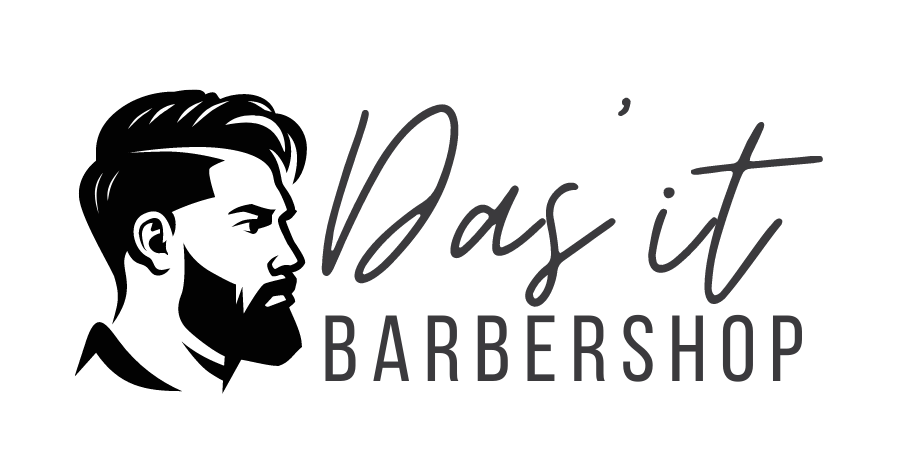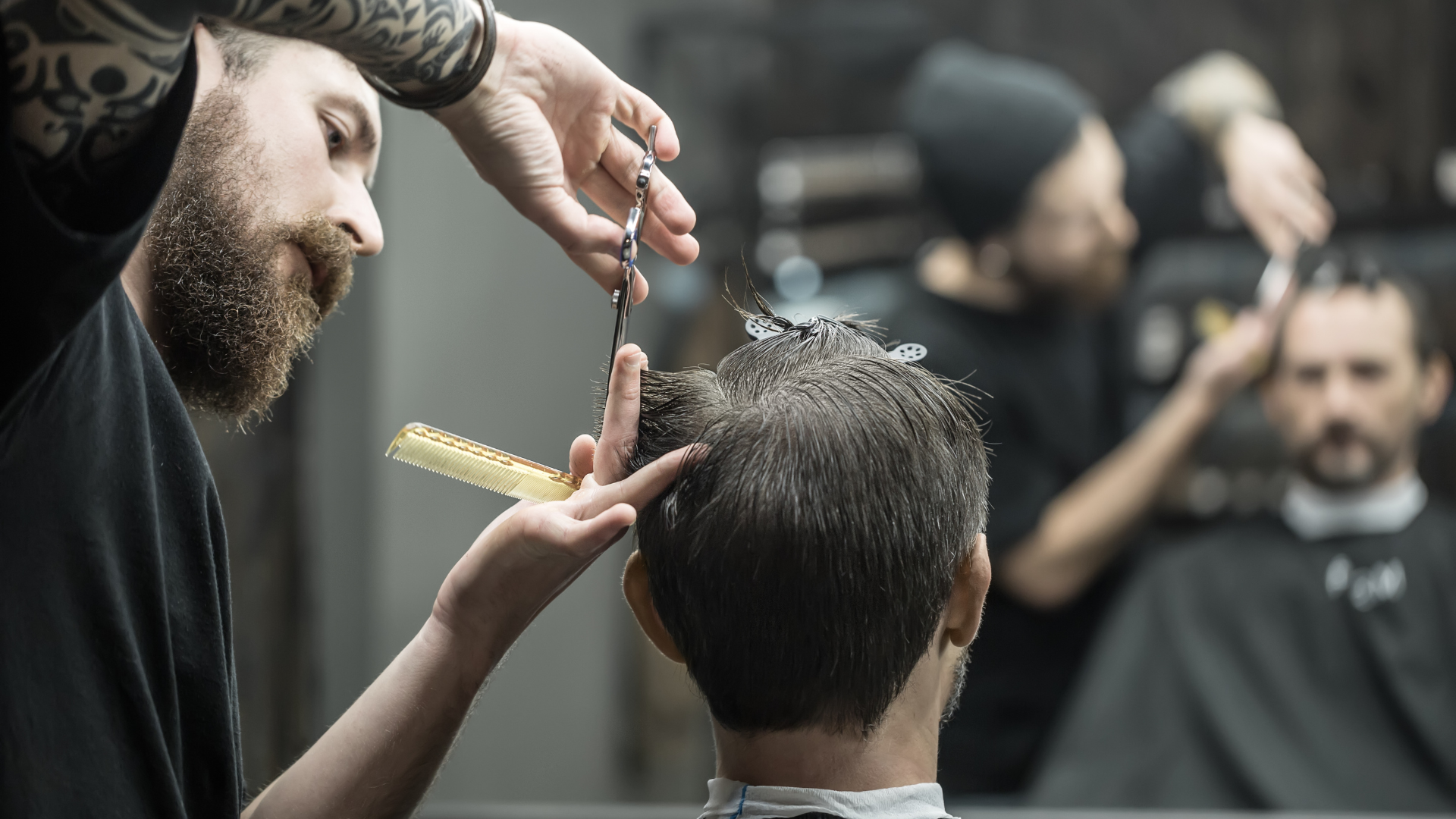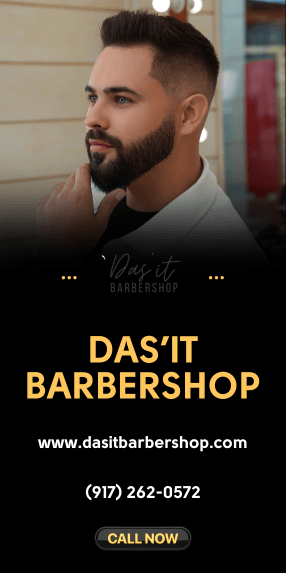Barbershops have been a cornerstone of grooming and social interaction for centuries. Many of the tools used in historic barbershops are still found today, proving their timeless effectiveness. From straight razors to vintage clippers, these tools have stood the test of time. Here are 11 historic barbershop tools that remain popular in modern grooming.
1. Straight Razor
The straight razor, often referred to as a “cutthroat razor,” is one of the most iconic and enduring tools in the history of barbering. With origins tracing back to the 18th century, it has long been celebrated for its unmatched precision and ability to deliver an impeccably close shave. Unlike modern disposable razors or electric shavers, the straight razor demands skill, technique, and patience, which is why it is often seen as the gold standard of shaving. This tool consists of a sharp blade that folds into a handle, usually made from durable materials like stainless steel and occasionally adorned with fine wood or decorative engravings.
One of the main reasons the straight razor has stood the test of time is its ability to provide a shave that is unparalleled in smoothness and longevity. Professional barbers who have mastered this tool often use it for intricate shaving tasks, such as shaping beards, detailed hairline work, or achieving that perfectly clean, razor-cut finish.
Today, straight razors are making a comeback, especially in upscale and high-end establishments like barbershops in New York, where the art of traditional grooming is revered. These shops prioritize techniques such as pre-shave skin preparation, hot towel treatments, and post-shave balms, all of which complement the use of a straight razor. Proficient barbers who offer these services create an experience that feels luxurious and timeless, making a straight razor shave much more than just routine grooming — it becomes a ritual steeped in tradition and precision.
However, the tool also sees use beyond the barbershop. Enthusiasts and purists who enjoy at-home shaving have rediscovered straight razors as an eco-friendly and cost-effective grooming option. While they require proper maintenance, including regular stropping and occasional honing to maintain blade sharpness, the payoff is long-term durability and reduced waste compared to disposable alternatives. To beginners, mastering the straight razor might feel intimidating at first, but with practice, it becomes an art that pays homage to the rich legacy of barbering.
2. Barber Scissors
Barber scissors, sometimes referred to as shears, have been a fundamental tool for hair cutting since the early 1900s. Unlike ordinary household scissors, barber scissors are specifically crafted with premium materials such as high-quality stainless steel or titanium. This ensures they retain their sharpness for precise cutting and offer a level of durability that withstands the rigors of professional use. These scissors are ergonomically designed with weight, balance, and comfort in mind, allowing barbers to work for long periods without experiencing hand fatigue.
The functionality of barber scissors makes them an indispensable part of styling, whether it’s creating sharp, defined looks or layering and blending for a more natural effect. Their razor-sharp edges are engineered to cut hair cleanly in a single motion, minimizing split ends and resulting in a smoother finish. Additionally, professional-grade shears often feature specialized types, such as thinning scissors used to remove excess bulk and create texture or long-bladed scissors for precision on longer hair.
Barbershops across the globe rely on these tools daily, and for good reason. A skilled barber can manipulate a pair of scissors with remarkable dexterity, adjusting angles and techniques to craft a look tailored precisely to each client’s preferences. Just as with the straight razor, barber scissors also represent a level of craftsmanship and dedication to the art of grooming that has persisted for generations.
For customers who prefer DIY grooming, investing in a high-quality pair of barber scissors can elevate the at-home grooming experience. Whether it’s trimming messy ends, shaping a beard, or tidying up stray hairs between visits to the groomer, barber scissors provide an essential level of control. Proper care is important to preserve their functionality, including regular cleaning and occasional sharpening.
A prime example of their utility is during an at-home beard trim, where the precision of barber scissors allows individuals to maintain clean lines and an even shape. Many kits marketed to men’s grooming enthusiasts include barber-grade scissors as a standard tool, emphasizing their importance across both professional and personal grooming settings. Such versatility and longevity have firmly cemented barber scissors as a quintessential tool that bridges the gap between tradition and modernity in grooming practices.
3. Shaving Brush
Before the age of modern shaving creams and gels, shaving brushes were indispensable tools in a barber’s arsenal. These brushes were primarily used to whip up a rich, creamy lather from traditional shaving soaps, ensuring an even application on the face. Often crafted from natural materials like badger hair or boar bristles, the brushes boast a softness and resilience that contribute to their premium quality.
Today, they remain a preferred choice among grooming enthusiasts looking to add a touch of luxury to their shaving routine. Beyond their role in creating lather, shaving brushes help lift and separate facial hair, making it easier for razors to glide smoothly over the skin. They also provide gentle exfoliation by removing dead skin cells, leaving the face feeling refreshed and revitalized. For many, incorporating a shaving brush into their grooming rituals bridges the gap between functionality and indulgence, making every shave feel like a pampered experience.
4. Hone Strop
A hone strop is an essential tool for maintaining the sharpness of straight razors, one of the oldest and most classic grooming implements. Traditionally made from high-quality leather or canvas, a hone strop is designed to refine and realign the blade’s edge, ensuring that it remains razor-sharp for precise cuts. The stropping process involves running the razor blade along the surface of the strop in a specific motion, an art that skilled barbers have perfected over generations. This practice not only extends the life of the blade but also guarantees a smoother shaving experience, reducing irritation and nicks on the skin.
Many New York barbers have embraced the hone strop as a symbol of craftsmanship and tradition in an era dominated by disposable razors and electric trimmers. These professionals often prioritize the use of straight razors that are maintained with strops, showcasing their commitment to precision and authenticity in their services. Whether it’s an upscale barbershop in Manhattan or a vintage-inspired grooming lounge in Brooklyn, the hone strop remains a revered tool among barbers who honor the heritage of meticulous shaving techniques. They treat stropping as a ritualistic practice, emphasizing their dedication to delivering the finest grooming experience to their clients.
5. Vintage Hair Clippers
Before the advent of electric clippers, manual hair clippers were the industry standard, exemplifying craftsmanship and precision. These hand-operated tools required a significant amount of skill and dexterity to use effectively, as barbers controlled the cutting action by repeatedly squeezing the handles together. This manual operation ensured unparalleled control over each cut, allowing barbers to deliver intricate and even hairstyles with remarkable precision. Although these tools demanded effort and patience, the results were often unparalleled, making them a staple for decades.
Today, vintage manual hair clippers hold a nostalgic charm and are sought after by both collectors and traditionalists alike. These devices stand as a tribute to the artistry and dedication of early barbers who honed their craft through their use. While most modern barbers rely on electric versions for convenience and speed, some purists continue to use manual clippers, valuing their durability, dependability, and the tangible connection to past generations of the trade. The use of these vintage tools not only reflects a commitment to preserving classic grooming traditions but also showcases the timelessness of their functional design.
6. Lather Bowl
A lather bowl is a quintessential element of traditional shaving, helping to create the rich, luxurious foam essential for a smooth and comfortable shave. These bowls are designed to hold shaving soap or cream, and their slightly textured inner surface often aids in whipping up a thick lather using a shaving brush. Traditionally crafted from durable materials like metal or ceramic, lather bowls have become symbolic of the authentic barbering experience.
Even today, many barbers in iconic locations, such as timeless barbershops in New York’s urban corners, continue to use lather bowls for wet shaves. The process of creating lather within the bowl is as much a ritual as it is a practical necessity. It exudes a sense of tradition and craftsmanship, transforming a simple grooming act into an indulgent experience. For clients, the sight, smell, and feel of thick foam applied with a soft brush heighten the sense of luxury during a shave, reaffirming the lather bowl’s enduring role in the art of barbering.
7. Safety Razor
First introduced in the early 20th century, the safety razor revolutionized shaving, making it safer and more accessible to the general population. Unlike straight razors, which required significant skill and experience to operate effectively, the safety razor was designed with a protective guard that reduced the risk of cuts and nicks while still delivering a close and clean shave. Its innovative design quickly gained popularity, replacing straight razors in many households and professional settings alike.
For barbers and at-home grooming enthusiasts, the appeal of the safety razor lies in its perfect balance between practicality and elegance. Its weighted handle and replaceable blades make it not only efficient and cost-effective but also timelessly stylish. Today, the safety razor is experiencing a resurgence in popularity, with many people seeking an alternative to disposable cartridge razors. Whether used in professional barbershops or for a daily at-home beard trim, safety razors are celebrated for their ability to offer a smooth shave with a touch of vintage flair. Their sustainability and the satisfying ritual of shaving with one have cemented their place as a cherished tool in grooming culture.
8. Barber Cape
Barber capes have long been a crucial tool in the art of grooming, serving both functional and aesthetic purposes. These capes, typically constructed from durable waterproof fabrics such as nylon or polyester, act as a protective barrier, shielding clients’ clothing from stray hair, water, and cleansing products during haircuts, shaves, or styling sessions. Designed for comfort and practicality, modern barber capes often feature adjustable snap or Velcro closures to accommodate clients of various neck sizes and ensure a snug fit. Their lightweight nature ensures they don’t feel heavy or restrictive, allowing clients to relax while receiving their grooming service.
Beyond functionality, barber capes contribute to the overall experience, with many barbershops curating capes that align with their brand identity or aesthetic. For instance, some barber in New York choose to incorporate vintage-style capes adorned with classic patterns, logos, or elegant pinstripes, evoking a nostalgic feel that transports customers back to the golden age of barbering. These capes not only protect but also help set the tone for a premium grooming experience, emphasizing tradition and timeless craftsmanship. Whether plain, modern, or vintage-inspired, the barber cape remains indispensable in the world of professional grooming, elevating both hygiene and style.
9. Neck Duster
The neck duster, though a simple tool, is one of the most iconic and indispensable items in any barber’s arsenal. Designed to gently sweep away loose hair clippings from the neck, face, and shoulders after a haircut or shave, the neck duster has a rich history dating back to the late 1800s. Its design has remained relatively unchanged over the decades due to its practical and straightforward functionality. Most neck dusters are made of ultra-soft bristles crafted from natural fibers like horsehair or high-quality synthetic materials, ensuring a smooth and comfortable touch on the skin.
The neck duster’s ergonomic handle, often made of wood, plastic, or rubberized material, allows barbers to maintain a secure and comfortable grip while working swiftly and efficiently. Modern versions may even include built-in powder applicators that release a fine layer of talcum or aromatic powder to leave the client feeling refreshed while also preventing skin irritation. The neck duster symbolizes the attention to detail that defines traditional barbering, ensuring every client leaves the chair feeling clean and well-groomed. Despite technological advancements in grooming tools, the neck duster endures as an irreplaceable staple in barbershops, embodying the personal touch that makes the barbering craft so cherished.
10. Razor Strop Paste
Razor strop paste is an essential product for barbers who are devoted to maintaining the highest standards of their craft. Used in combination with a leather strop, this paste plays a vital role in keeping straight razor blades razor-sharp and impeccably smooth. Its history can be traced back to the 19th century when barbers adopted strop pastes to enhance the longevity of their tools and ensure cleaner, closer shaves. By conditioning and treating the leather strop, the paste improves its ability to refine the blade’s edge, reducing any nicks or imperfections that could compromise the quality of a shave.
Razor strop paste typically comes in several forms, including abrasive pastes containing fine polishing particles and non-abrasive varieties that preserve leather. The abrasive versions help restore blades by removing micro-abrasions, while the non-abrasive types focus on nourishing and preserving the strop’s surface. Applying strop paste requires precision—a thin, even layer should be spread across the leather, allowing it to sink in and prepare the surface for blade sharpening. Barbers who incorporate strop paste into their shaving routines often take pride in the meditative ritual of maintaining their tools, as it reflects their commitment to delivering the perfect shave.
Even in modern times, when disposable razors and electric shavers dominate the market, razor strop paste remains a favorite among barbers who celebrate the art of traditional grooming. These barbers understand that sharp, well-maintained tools not only deliver superior results but also uphold the timeless standards of the profession. Razor strop paste, combined with care and expertise, ensures that the art of straight razor shaving continues to thrive in its purest form.
11. Barber’s Chair
The classic barber’s chair holds a unique place in the history and culture of grooming. Emerging in the 19th century, these chairs were designed to enhance the barbering experience for both the barber and the client. Built with sturdy materials, they feature adjustable heights, reclining capabilities, and footrests, allowing barbers to achieve the perfect angle for detailed work. Beyond functionality, barber’s chairs have become iconic symbols of the trade, embodying the traditional craftsmanship and timeless appeal of barbershops.
Many modern barbershops pride themselves on maintaining vintage-style barber’s chairs, complete with luxurious upholstery, intricate metal detailing, and a robust frame that withstands decades of use. These chairs not only deliver exceptional comfort but also add an old-school charm to the shop’s ambiance, creating a nostalgic connection to a bygone era. Even as technology advances, the barber’s chair remains a centerpiece that bridges the past and present, standing as a testament to enduring quality and design.
Conclusion
Barbershop tools have undoubtedly evolved over time, yet many historic items remain cherished and widely used to this day. From the precision of straight razors to the reliable elegance of barber’s chairs, these tools continue to offer quality and satisfaction to professionals and enthusiasts alike. Their lasting popularity highlights a simple truth—great design and impeccable functionality never go out of style, ensuring their legacy endures for generations to come.


